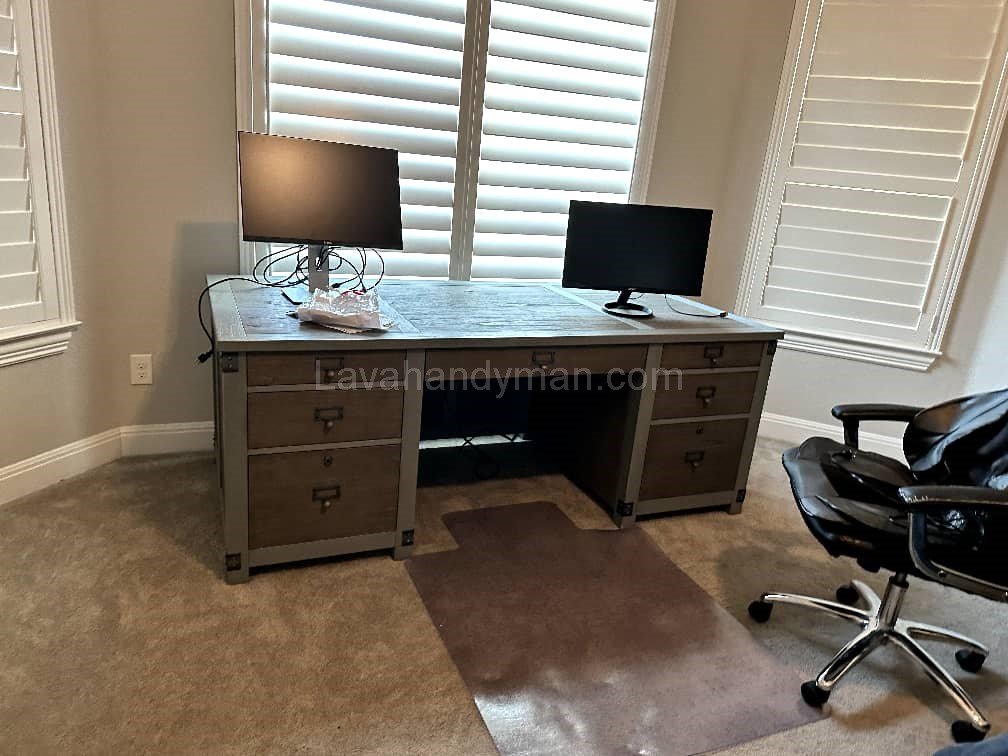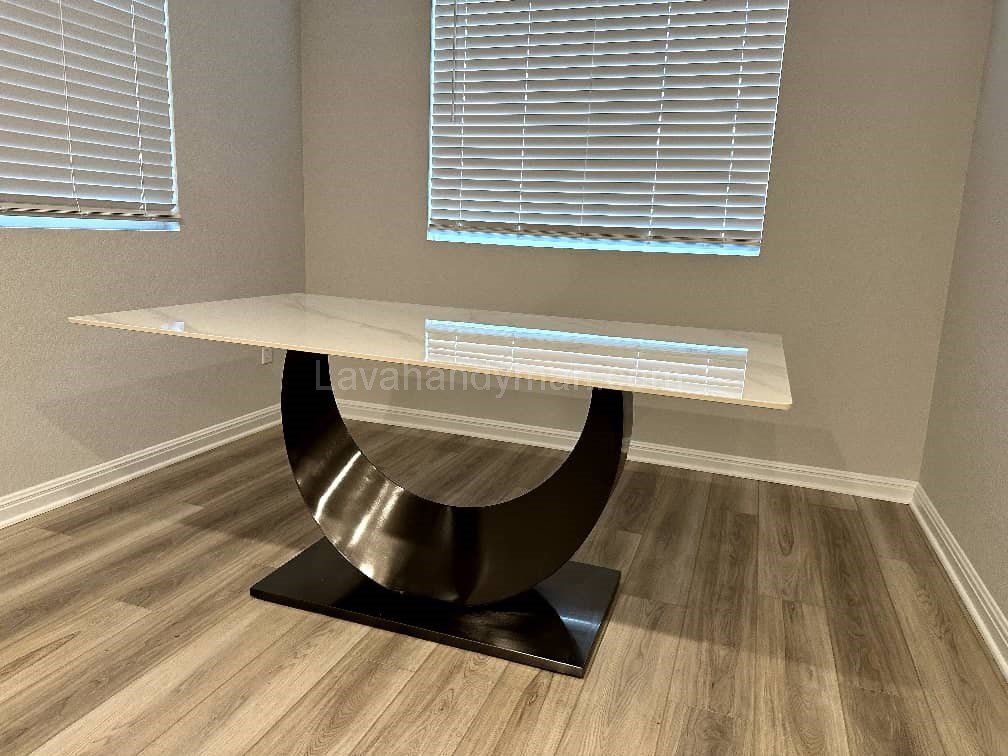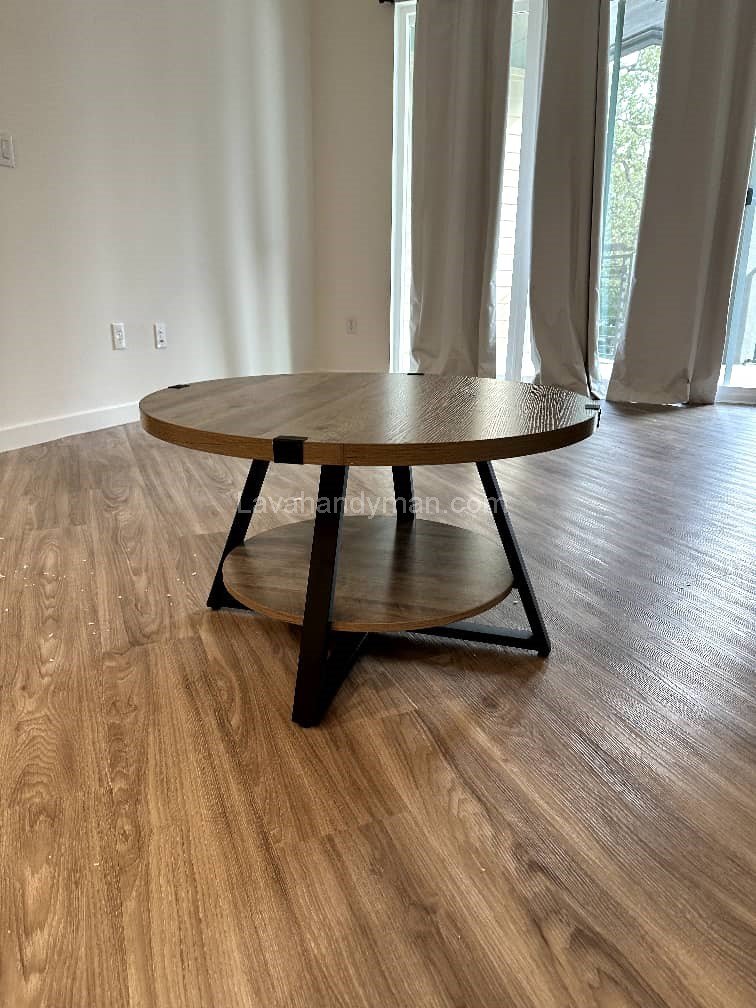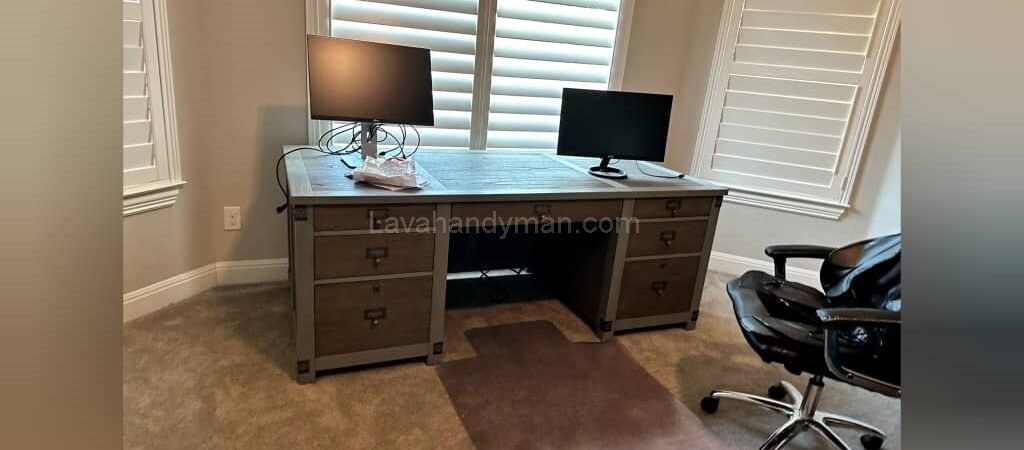Easy Furniture Assembly: Learn How to Install a Table, Desk, and Nightstand
Introduction
Furniture is one of the most essential elements of modern life. It not only provides comfort but also enhances the beauty and functionality of living and working spaces. Among the most widely used pieces of furniture are tables, desks, and nightstands, which are indispensable in bedrooms, study rooms, and offices.
Today, most of these items are sold as flat-pack pieces, requiring assembly before use. Proper assembly is highly important, as it directly affects the safety, durability, and appearance of the furniture.

1. A Brief History of Furniture
- In ancient Egypt, chairs and tables symbolized power and social status.
- In Greece and Rome, furniture design was strongly influenced by architecture.
- During the Renaissance, intricate woodwork and ornamentation became popular.
- In the 20th century, industrialization led to lightweight, practical, and mass-produced furniture.
- Today, modern furniture emphasizes ease of transport and quick assembly.
This evolution highlights how assembly has become an integral feature of the furniture industry.
Easy Furniture Assembly
2. Importance of Proper Assembly
Assembly is not just about putting pieces together; it is a process that offers many benefits:
- Increased durability: Secure joints prevent early loosening or breakage.
- User safety: Poorly assembled furniture may collapse or tip over.
- Aesthetic appeal: Properly aligned screws and joints create a neat appearance.
- Ease of use: A correctly assembled piece does not wobble or cause inconvenience.
3. Essential Tools for Assembly
To achieve fast and accurate assembly, the following tools are needed:
- Flathead and Phillips screwdrivers
- Allen wrench (often included in the package)
- Electric or cordless drill
- Rubber mallet
- Measuring tape and level
- Safety gloves
Having the right tools improves both speed and accuracy.
Easy Furniture Assembly
4. Steps for Assembling a Table
- Check all parts: Unpack and compare with the manual.
- Attach the legs: Fix the legs into their designated slots under the tabletop.
- Tighten securely: Do not over-tighten or leave screws too loose.
- Install shelves or drawers (if any): Add secondary parts before finishing.
- Final inspection: Place the table on a flat surface and check alignment with a level.
Easy Furniture Assembly
5. Steps for Assembling a Desk
Desks are usually more complex than simple tables, as they often include drawers and shelves:
- Build the main frame: Connect side panels and the main top surface.
- Assemble drawers: Attach drawer bottoms, sides, and rails.
- Install shelves or side cabinets: Add storage compartments as designed.
- Check drawer movement: Ensure drawers slide smoothly.
- Secure the desk: Place it in position and tighten all screws.
Easy Furniture Assembly
6. Steps for Assembling a Nightstand
Nightstands are smaller and easier to assemble:
- Build the frame: Connect side panels and the bottom.
- Attach the top panel: Secure the upper surface with screws.
- Add drawers or doors (if any): Fix rails or hinges properly.
- Final check: Ensure stability and smooth drawer movement.
7. Common Assembly Mistakes
- Over-tightening screws, which can crack MDF or chipboard.
- Ignoring the manual or skipping steps.
- Using the wrong tools.
- Assembling on uneven surfaces.
- Forgetting small but important parts such as brackets or screws.
8. Maintenance After Assembly
- Keep furniture away from moisture and direct sunlight.
- Re-tighten screws every few months if needed.
- Use soft cloths and appropriate cleaning products for wood or MDF.
- Lift furniture when moving it instead of dragging it.
Easy Furniture Assembly
Step-by-Step Guide to Furniture Assembly (Table, Desk, Nightstand)
Preparation Before Starting
- Workspace: Choose a flat, clean, and soft surface (use a blanket or cardboard to avoid scratches).
- Required Tools: Flathead and Phillips screwdrivers, Allen key, cordless drill, rubber mallet, measuring tape, level, safety gloves.
- Check the Parts: Unpack all panels, legs, screws, and fittings, and compare them with the manual.
- Organize Hardware: Sort screws and connectors into small containers to prevent loss.
- Read the Manual: Carefully review the manufacturer’s instructions before starting.
General Assembly Principles
- Tighten screws loosely at first, then fully secure them at the end.
- Assemble symmetrically and step by step to distribute pressure evenly.
- Avoid over-tightening, as it can crack MDF or chipboard.
- Ask for help when lifting or aligning heavy parts.
Easy Furniture Assembly
Steps to Assemble a Table
- Lay out all pieces and match them with the manual.
- Attach the legs to the tabletop.
- If the table has drawers or shelves, install the frame first.
- Secure all screws one by one, but do not over-tighten.
- Place the table on a flat surface and check alignment with a level.
Steps to Assemble a Desk
- Build the main frame (side panels and back).
- Install drawer rails inside the frame.
- Assemble drawer boxes separately and attach rails.
- Slide drawers into place and check smooth movement.
- Install the top panel and shelves if included.
- Tighten all screws and check desk stability.
Easy Furniture Assembly
Steps to Assemble a Nightstand
- Connect the body (bottom and side panels).
- Attach the legs, if applicable.
- Place and secure the top panel.
- Install the drawer or door.
- Check the nightstand’s stability on the floor.

Common Assembly Mistakes
- Over-tightening screws.
- Skipping the manual.
- Using the wrong tools.
- Assembling on uneven surfaces.
- Forgetting small parts like brackets or washers.
Easy Furniture Assembly
Maintenance After Assembly
Lift furniture when moving it instead of dragging it.
Keep furniture away from moisture and direct sunlight.
Re-tighten screws every few months if necessary.
Use a soft cloth and proper cleaning products for wood or MDF.
Types of Brackets and Connectors in Furniture Assembly
In assembling furniture such as tables, desks, and nightstands, brackets play a key role in strength, stability, and appearance. Depending on the type of furniture and material, various brackets are used:
Easy Furniture Assembly
1. L-Bracket
- Use: Connects two pieces at a right angle, e.g., legs to the body or side panel to the bottom.
- Features: Simple, widely used, usually made of metal (steel or aluminum).
2. T-Bracket
Easy Furniture Assembly
- Use: Connects three pieces in a T-shape, commonly used in desks or internal shelves.
- Features: Provides higher stability for multi-directional joints.
3. Corner Bracket
- Use: Reinforces corners and prevents wobbling.
- Features: Ideal for nightstands and drawers.
4. Flat Bracket / Joining Plate
- Use: Directly connects two pieces along their edges and reinforces joints.
- Features: Simple appearance and easy installation.
5. Concealed Bracket
- Use: For shelves or parts where appearance matters.
- Features: Invisible from the outside, suitable for modern furniture.
6. U-Bracket
- Use: Holds or secures thick legs or heavy parts.
- Features: Often used in metal or hybrid tables.
7. Drawer Slide Bracket
Easy Furniture Assembly
- Use: Installs drawer slides to the cabinet body.
- Features: Usually comes with the slide and ensures smooth drawer movement.
8. Anti-Tip Bracket
- Use: Secures furniture to the wall for safety.
- Features: Used for desks and cabinets to prevent tipping accidents.
Important Notes for Choosing Brackets:
In modern furniture, concealed brackets or Cam Lock systems are preferred for a clean, hardware-free appearance.
For MDF or particleboard, use lightweight but strong metal brackets to avoid cracking or splitting.
For solid wood, heavier brackets and longer screws can be used.
Safety Tips for Furniture Assembly
Following safety guidelines during furniture assembly helps prevent personal injury and protect the furniture and surroundings.
Easy Furniture Assembly
1. Use the Right Tools
- Always use standard, well-maintained tools (screwdrivers, Allen keys, drills).
- Do not use damaged or broken tools.
- When using drills or power tools, always wear safety gloves and goggles.
2. Prepare a Safe Workspace
- Work in a flat, clean, and obstacle-free area.
- Place a blanket or cardboard under furniture parts to prevent scratches or breakage.
- Keep children and pets away from the assembly area.
Easy Furniture Assembly
3. Moving Heavy Parts
- Always get help from another person for large or heavy pieces.
- Lift furniture, don’t drag it, to avoid damage to both furniture and floor.
4. Assemble Parts Carefully and in Order
- Follow the manual step by step.
- Before fully tightening screws, place all pieces loosely for trial fitting.
- Avoid excessive force on MDF or particleboard to prevent cracking or splitting.
Easy Furniture Assembly
5. Use Anti-Tip Brackets
- For tall desks, cabinets, and shelves, always use anti-tip brackets and secure the furniture to the wall.
- This is especially important in homes with children to prevent tipping accidents.
6. Ensure Drawer and Hinge Safety
- Install drawer slides correctly to avoid sticking or falling.
- Check that hinges and doors are secure before use.
7. Personal Safety
- Wear gloves and proper shoes to prevent cuts or injuries.
- Keep fingers clear when using a rubber mallet.
- Always wear safety goggles when using power tools.
Easy Furniture Assembly
8. Final Check
Tables, nightstands, or drawers should not wobble or be uneven.
Make sure all screws are tight and parts are stable before use.
Conclusion
Furniture assembly may seem simple, but it is a crucial process. By following the instructions, using the right tools, and paying attention to details, anyone can successfully assemble a table, desk, or nightstand.
Well-assembled furniture lasts longer, looks better, and ensures user safety. Ultimately, proper assembly not only protects your investment but also adds value to your everyday living experience.
📞 Need Help?
Let us take care of the hard work while you sit back and relax.
📍 Serving: Austin, Round Rock, Cedar Park & more
📱 Call or Text: (737) 420-6992
🌐 Visit: https://lavahandyman.com


